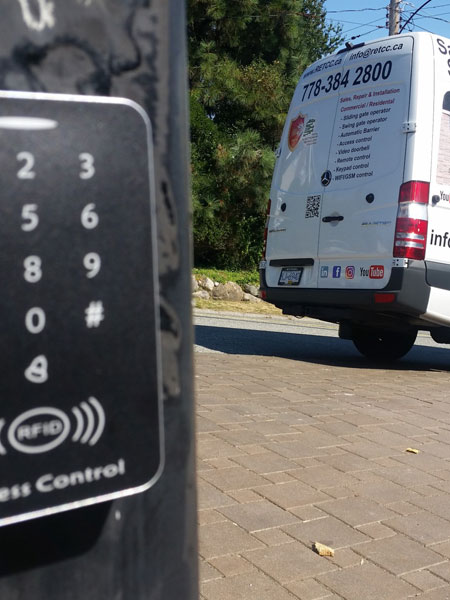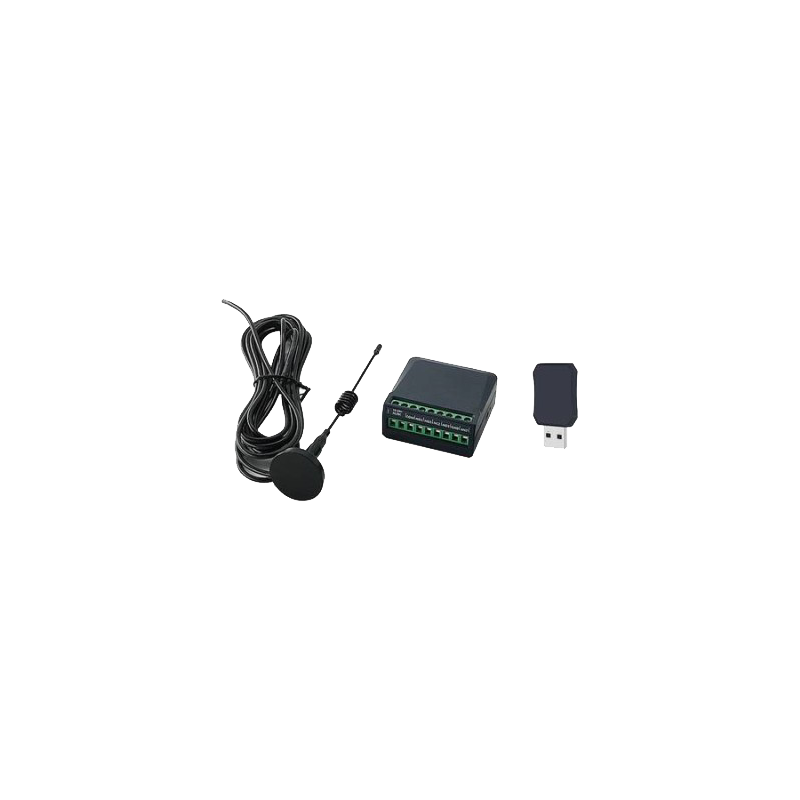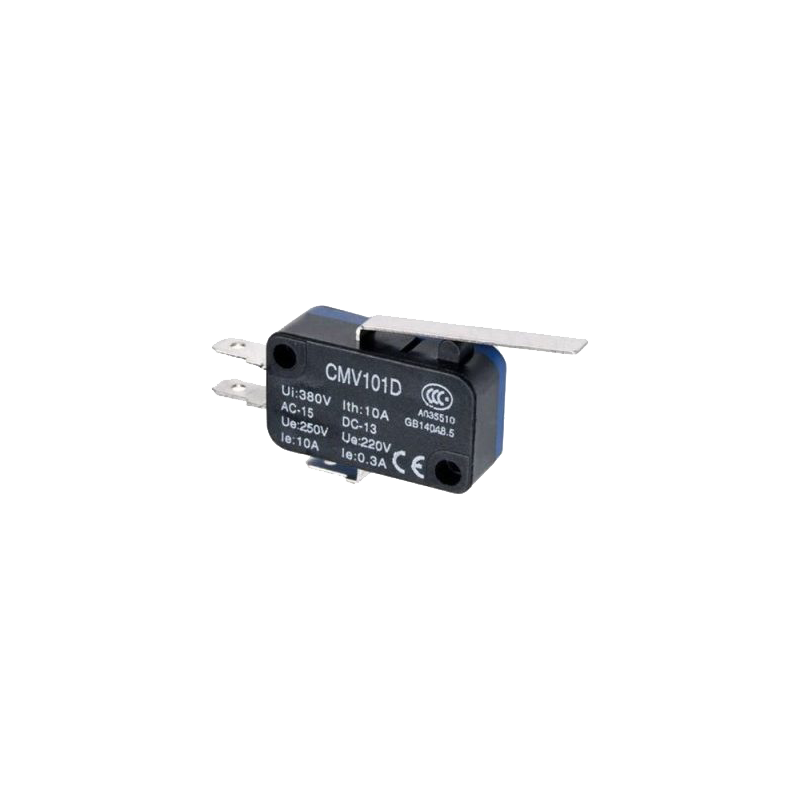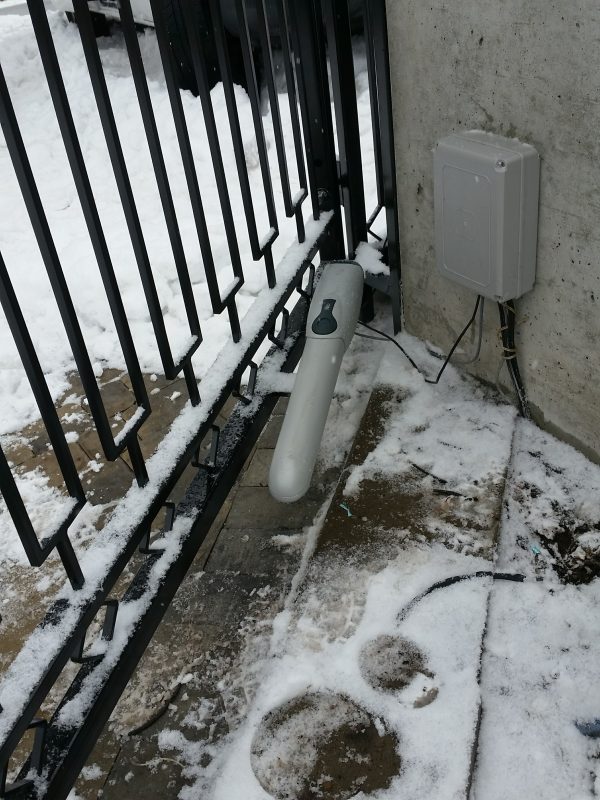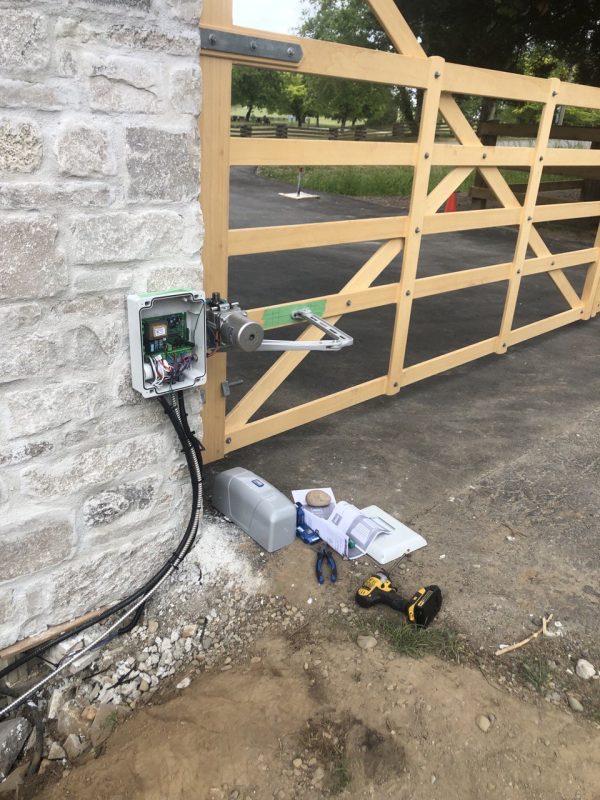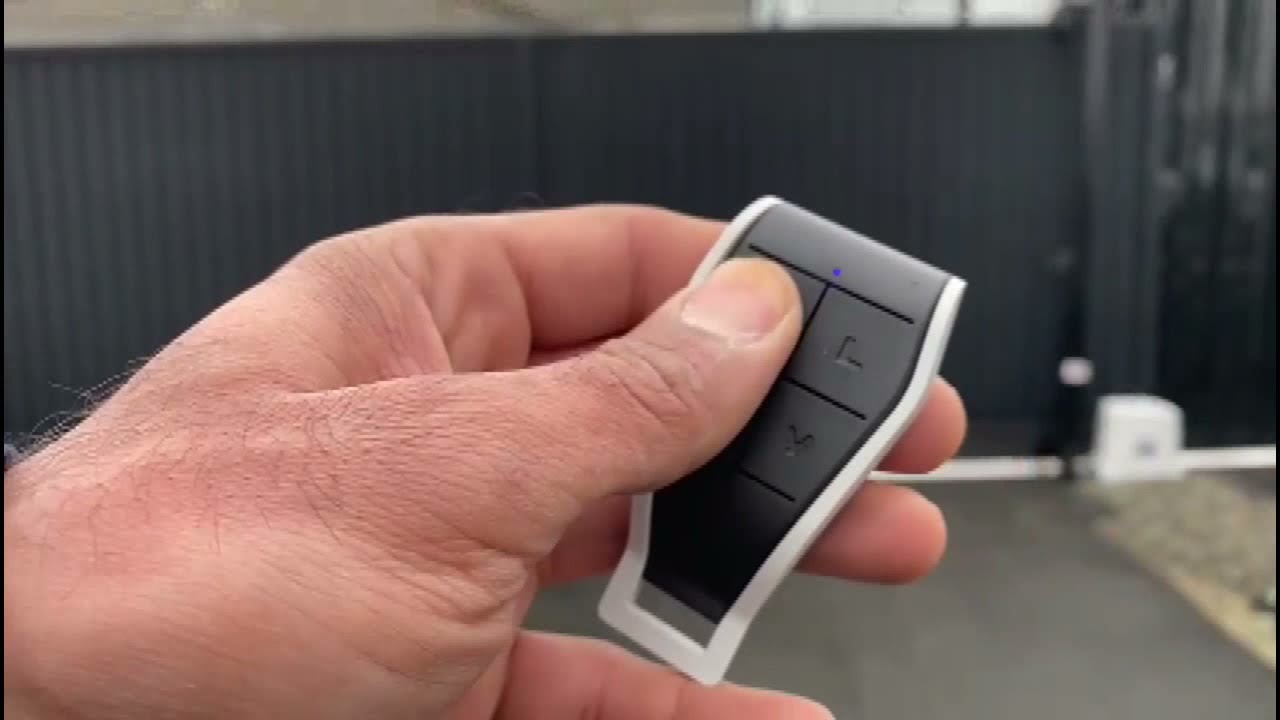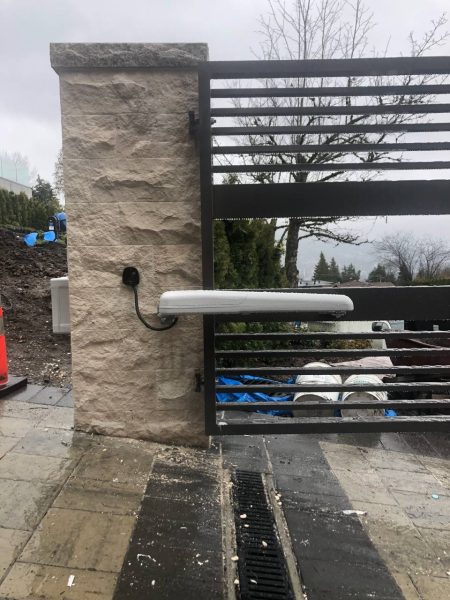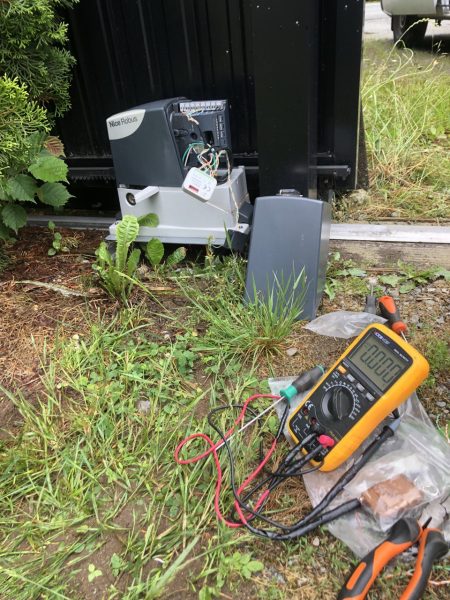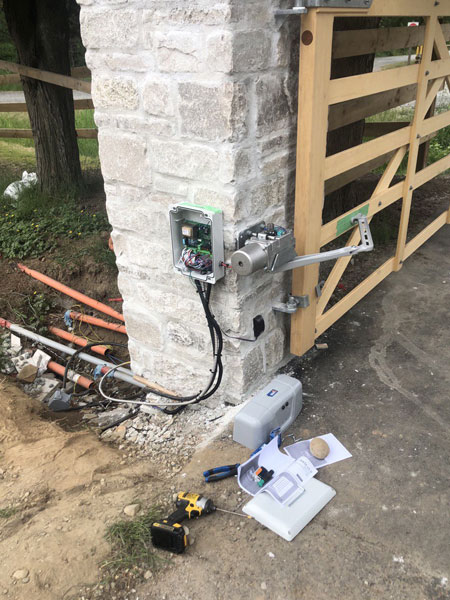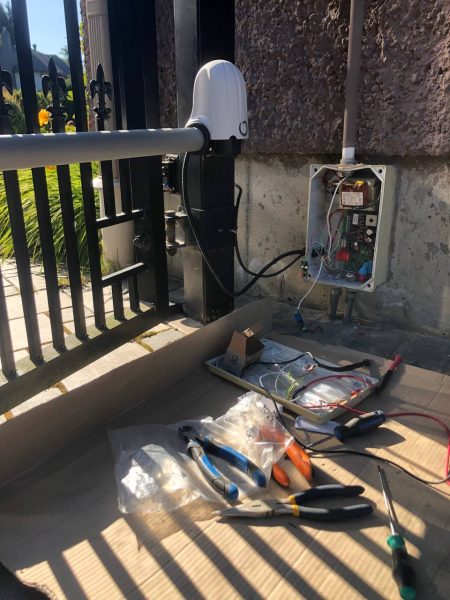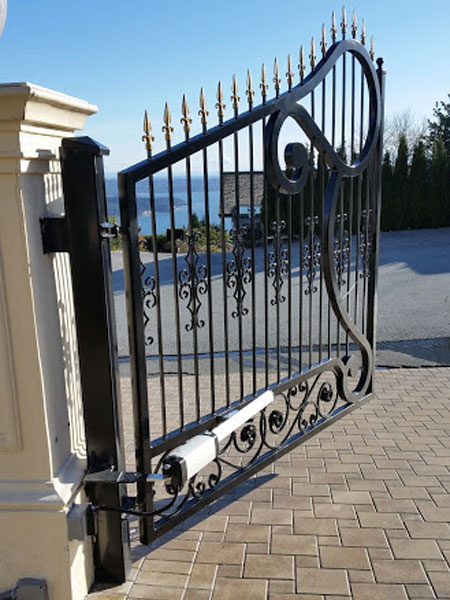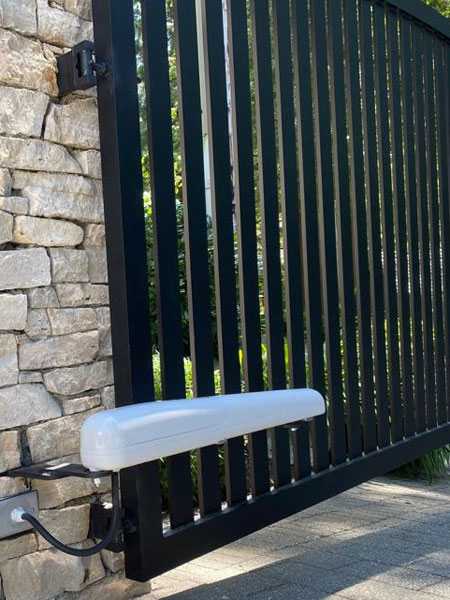Safety Features That Should Be On Automatic Gates
Once you have your beautiful new electric gate installed, the safety and functionality of your new device become paramount. For starters, you will have to keep the gate properly maintained, as this can prevent it from breaking down in the future. Another thing to consider is the safety devices that you have installed on your security gate, which not only protect your gate from damage but can also keep your guests safe and you out of legal trouble.
Some safety requirements are compulsory on your automatic gate from a legal standpoint, while others are just recommended. As a result, it is a good idea to speak to the experts at Royal Gate Company to ensure that you have all of the safety standards met on your new investment. If you notice that one of your automatic gate safety devices isn’t responding, we can send a licensed and insured technician to get it up and running before it becomes a major issue.
A Back-Up Power Supply
Because your gate is wired into your home’s electrical system, your gate operator won’t work when the power goes out. When this happens, you must still have access control of your electronic gates, or else you run the risk of being trapped on or off your property.
If your gate has been installed correctly, one of three safety measures should have been implemented under the national fire code:
1) The gate might have a single-use battery, which will open the gate once and leave it open until power is restored. This battery ensures that people can exit the property during a blackout without having to worry about the gate.
2) Your automated gate could have a multi-use battery installed. With this battery, the gate operators will continue to function as they always have throughout the blackout, so your property remains secure. Since most power outages are relatively short, you shouldn’t have to worry about the battery running out during this time.
3) An automatic gate can be set up to unlock on its own once the power goes out, so that you can open and close it manually until the power comes back. The mechanical lock will unlatch if there isn’t any power running to it.
If you are unsure if your electric gate has any of these safety measures installed, call us at 778 384 2800 to have a look. It is also wise to have your system inspected after a blackout to ensure that your battery is still functional.
Proper Gate Design in Canada
Checking that your gate’s design keeps pedestrians safe is vital because the last thing you want is for an injury to occur on your property. The gate should be developed and installed with provisions in place that make it impossible for a person to become trapped between a moving and stationary part of the gate. These gates are hefty, and if a person is pinned between the gate and a pillar, there is a good chance that the injuries will be severe or even fatal.
The chance of a serious injury is one of the main reasons why it is a good idea to have the gate installed by a certified technician, as these experts know how to set the gate up in a manner that minimizes the risk. Unless
you have this kind of experience, you might not think of all the places where a pedestrian could be trapped by the gate, putting visitors to your home in potential danger. Even optimally designed gate systems create risk when not installed as they should be.
Vehicle and Pedestrian Detection Safety Devices
Another item that your automatic gate should have is a detection device. This tool lets the gate know when a vehicle or person is in the way while the gate is opening or closing. When the detection device is triggered, the gate will automatically stop, and in some cases reverse, before it has the chance to do any damage.
The majority of these gates have vehicle detection loops installed. As the name implies, these devices can tell if a vehicle is in the way of the gate and will ensure that the gate stops before making contact with the car. You can adjust the settings on the detection loops according to your preferences. For example, if you frequently have guests at your home or are having a party one night, you can change the settings to allow people in and out more easily.
Reversing Safety Edges for Automatic Driveway Gates
Any automatic gates on your property should have reversing edges. The basic idea behind these safety devices is that they force the gate to shift direction whenever something makes contact with it. This feature prevents the gate from staying in a potentially dangerous location, instead opening or closing until the obstruction is gone.
For example, if your gate closes too quickly and makes contact with a vehicle that is trying to exit your property, this device reverses the gate so that it doesn’t continue closing on the car. The hope is that changing directions quickly after contact can minimize the damage. If your other safety devices fail or if an undetected person or vehicle manages to hit your gate, you will be happy that your gate was equipped with the ability to get out of the way quickly.
Keeping Your Driveway Gate Safe
Automatic gates are meant to keep your property safe and secure, but whenever a 500-plus-pound piece of iron is swinging around, there is the potential for damage to occur. That is why having an automatic gate expert inspect the safety devices on your gate is a good idea. Even one small mishap could hurt someone severely or do lots of property damage, so contact Royal Gate Company in Canada at 778 384 2800 to have one of our experts perform the necessary gate repair and maintenance on these safety devices or install additional tools that you don’t already have.
While these gates are set up with convenience in mind, keeping friends, family, and neighbors safe is vital, so make sure that your gates are working as they should.
Automatic gates, while convenient and secure, possess significant power and can pose serious safety risks if not equipped with the proper features. Technical safety features are crucial to prevent injury, entrapment, and damage.
Here’s a breakdown of what should be on automatic gates:
I. Entrapment Protection Devices (Primary Safety Measures):
These are the most critical safety features, designed to detect obstacles and prevent the gate from exerting dangerous force on a person or object. Current safety standards (like UL 325 in the US and similar European directives) often require at least two independent means of entrapment protection in each direction of travel where there’s a risk of entrapment.
- Photoelectric Sensors (Photo Eyes/Beams):
- How they work: These sensors emit a beam of light (often infrared) across the gate’s opening. If an object or person breaks the beam, the gate’s movement is immediately stopped and, in most cases, reversed.
- Placement: Typically, two pairs are recommended: one set between the gate posts and another set covering the extent of the gate’s swing or slide path. They should be mounted at a height to detect both vehicles and smaller children or pets (e.g., around 50 cm from the ground).
- Types:
- Through-beam: Consists of a separate transmitter and receiver.
- Retro-reflective: Combines the transmitter and receiver in one unit, bouncing the beam off a reflector.
- Monitoring: Modern standards require these devices to be “monitored,” meaning the gate operator will not function if the safety devices are not working properly.
- Safety Edges (Contact Sensors/Resistive Edges):
- How they work: These are flexible, pressure-sensitive strips mounted on the leading edges of the gate (and sometimes other pinch points). When compressed by contact with an object, they send a signal to the gate operator, causing the gate to stop or reverse.
- Placement: Essential on any leading edge of a moving gate leaf that could crush or impact an obstacle. For swing gates, multiple safety edges may be required, especially on double gates (e.g., 4-6 edges). For sliding gates, 3-8 safety edges might be needed, depending on the design and whether a safety cage is installed.
- Types: Can be wired or wireless.
- Category 3 Edges: Often recommended, indicating a higher level of safety performance and redundancy.
- Inherent Obstacle Detection / Force Limitation:
- How it works: Many modern gate operators have built-in systems that monitor the force exerted by the gate motor. If the gate encounters an obstruction and the force exceeds a safe limit, the system will stop or reverse the gate.
- Calibration and Testing: This system needs to be properly adjusted and regularly force-tested to ensure it complies with safety standards. Force tests measure both dynamic (impact) and static (crushing) forces at various points and gaps in the gate’s travel. There are strict limits on the initial force allowed and how quickly it must reduce upon impact (e.g., initial dynamic force limited to 1400N, dropping to below 150N within 750ms, and to 25N within 5 seconds).
- Limitations: While important, inherent force limitation alone may not be sufficient to protect against all entrapment hazards, especially in crush zones near hinges where torque can be very high. This is why supplementary safety edges are often necessary.
II. Design and Installation Considerations (Physical Safety Features):
- Anti-Entrapment Design: The gate’s physical design should minimize potential entrapment zones where a person could get trapped between moving and stationary parts. This includes:
- Small Gaps: Any gap greater than 2.25 inches (57 mm) and less than 16 inches (41 cm) where the gate passes by a fixed object must be protected. Gaps between vertical bars should also be less than 2.25 inches up to a height of 6 feet (1.8 m).
- Protective Screening/Mesh: For sliding gates, openings in the gate and adjacent fence (up to 6 feet/1.8m height) should be guarded to prevent a 2.25-inch sphere from passing through, preventing limb entrapment.
- Roller Guards/Covers: All exposed weight-bearing rollers and pinch points below 8 feet (2.5 m) above grade should have covers.
- Smooth Edges/No Protrusions: The bottom edges of gates should be smooth with no protrusions exceeding 0.5 inches (13 mm). Ornamental features that could snag or hook a person should be avoided or mitigated.
- Fall-Over Protection: Sliding gates must have features to prevent them from falling over if detached from their supporting hardware.
- Physical Gate Stops: To prevent over-travel in both directions for sliding gates.
- Separate Pedestrian Entrance: For safety, a visible and designated separate entrance for pedestrians should be provided, discouraging them from using the vehicular gate.
- Warning Signs and Lights:
- Warning Signs: Displayed signs on both sides of the gate warning pedestrians to stay clear of the gate’s entire travel path.
- Warning Lights (Flashing Lights): Indicate when the gate is in operation, alerting people nearby.
III. Operational and Electrical Safety Features:
- Manual Release System: In case of power failure or system malfunction, a manual release mechanism (usually a key-operated lock on the motor housing) must be present, allowing the gate to be opened or closed manually without damaging the system.
- Emergency Stop Switch: A prominent, easily accessible emergency stop button allows users to immediately halt the gate’s movement in an emergency.
- Battery Backup: A battery backup system ensures the gate can still operate (typically for a limited number of cycles) during a power outage, preventing people from being trapped in or out of the property.
- Grounding: The gate operator should be properly grounded to prevent electrical hazards.
- Soft Start and Stop: This feature gradually increases and decreases the gate’s speed at the beginning and end of its movement, reducing sudden jerks and wear on the system, and enhancing safety.
- Access Control Device Placement: All access control devices (keypads, remote controls, etc.) should be mounted at least 6 feet (1.8 m) away from any moving parts of the gate to prevent users from being in an entrapment zone while operating the gate.
- Automatic Close Feature: While convenient, this feature should always be used in conjunction with reliable entrapment protection devices to prevent the gate from closing on an unsuspecting person or vehicle.
IV. Regulatory Compliance and Maintenance:
- Compliance with Standards: In many regions, automatic gates must comply with specific safety standards (e.g., UL 325 and ASTM F2200 in North America, or the Machinery Directive and relevant EN standards in Europe). A Declaration of Conformity and CE marking (in Europe) are required.
- Professional Installation: Installation should be performed by a qualified and trained installer, often accredited by industry bodies (e.g., DHF, Gate Safe).
- Regular Maintenance and Inspection: The gate system, including all safety devices, should be regularly maintained and inspected by a competent professional (typically every 6 months) to ensure proper functioning and identify any wear and tear. A maintenance log should be kept.
- Risk Assessment: A thorough risk assessment of the gate system and its environment should be conducted to identify all potential hazards and ensure appropriate safety measures are in place.
By incorporating these technical safety features and adhering to relevant standards and maintenance practices, automatic gates can provide both security and safe operation.
–> To have in-site technical services:
- If you have an account with us, please send your request directly from your customer panel.
- Please click here to send your information and request directly to our customer hub, and let us know your preferred dates to schedule a visit.
- If you are in Greater Vancouver, BC, our technician will come to your address and resolve the problem.
- To have on-site technical services for your installed automatic driveway gate, if you have an account with Royal Gates, please send your request directly from your customer’s panel.
- If this is your first service request, and looking for our recommendations, please send some pictures from the gate operator, main control panel, and receivers or your remote control to us using WhatsApp at 778 384 2800 or by email to retcc.ca@gmail.com.
- You can click here to send your information and request directly to our customer hub, and let us know your preferred dates to schedule a visit.
- You will be contacted within one business day.
–> To get an estimate for your required driveway gate, you can click on “Fast Estimate”.
- If you want to continue please submit the form, your request will directly come to our customer hub and we will make contact with you, within a maximum of one business day.
- To create a custom quote, need more information like design, dimensions, your address, name, and email.
- You can click here to send your information and request directly to our customer hub, and let us know your preferred dates to schedule a visit (If necessary).
- If you are in Greater Vancouver, BC, our technician will come to your address.
- Please send some pictures of the driveway, posts, and the electric sources to us using WhatsApp at 778 384 2800 or by email to retcc.ca@gmail.com.
- You can click here to send your information and request directly to our customer hub, and let us know your preferred dates to schedule a visit.
- You will be contacted within one business day.
If your location is out of the BC, you can send some pictures from your driveway gate, and the operator by text message or email and call us to get our technician’s suggestions to resolve the issue on your driveway gate opener.
Royal Electronics Technology Center Co (Royal Gates) using the best gate automation technicians can repair the driveway gate operators.
Our main service area is in Vancouver BC Canada.
Victoria Island, Duncan, Gibsons, Nanaimo, Sechelt, Tofino, Port Alberni, Qualicum Beach, Parksville, Vancouver, West Vancouver, North Vancouver, Richmond, Burnaby, New Westminster, Surrey, Delta, White Rock, Coquitlam, Port Coquitlam, Anmore, Langley, Maple Ridge, Pitt Meadows, Abbotsford, and Chilliwack in British Columbia are our services areas.
For more information on the installation methods and our previous project regards to “How to Install an Automatic Gate” please visit our YouTube channel.

